The McDonnell Douglas F-15 Eagle has easily the most impressive record of any modern combat fighter, scoring more than 100 aerial victories without a single loss. The twin-engine all-weather fighter made its maiden flight in July 1972 and was first delivered to the United States Air Force in November 1974, serving with the 58th Tactical Fighter Training Wing at Luke Air Force Base (AFB), Arizona.
Developed initially to engage Soviet fighters, notably the Mikoyan MiG-23 (NATO reporting name “Flogger”) and MiG-25 (NATO reporting name “Foxbat”), it didn’t see its baptism of fire with the U.S. Air Force until 1991’s Operation Desert Storm in Iraq. However, the Israeli Air Force (IAF) had already scored dozens of kills with the F-15 Eagle, proving it was among the very best air superiority fighters of the era. But the IAF also highlighted that its secondary role as a ground attack aircraft shouldn’t be overlooked.

In October 1985, the IAF carried out Operation Wooden Leg, which saw 10 F-15B/D Eagles, designated the “Baz” in Israeli service, strike the headquarters of the Palestinian Liberation Organization (PLO) in Tunis. Not a single aircraft was lost in the daring raid.
Enter the Strike Eagle
Even before the IAF employed its Eagles in a ground-attack role, designers at McDonnell Douglas saw the potential for a two-seat variant that could take on a dual role, serving as both an air-to-air or air superiority aircraft and a ground-attack aircraft.
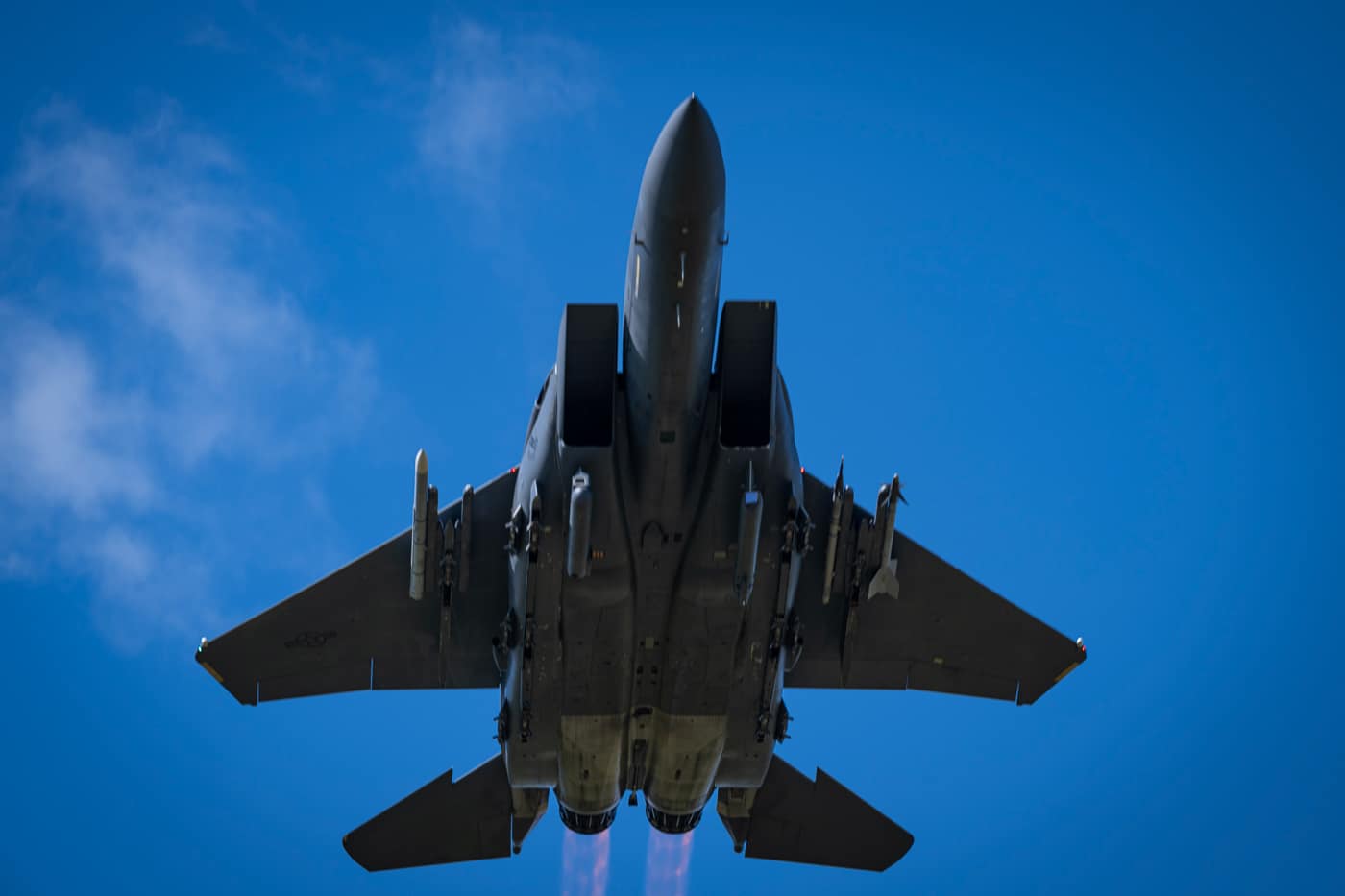
The F-15 was originally developed to replace the U.S. Air Force’s aging fleet of multi-role McDonnell Douglas F-4 Phantom IIs, which served as both an interceptor and fighter-bomber. However, as noted, the focus was mainly on its air-to-air capabilities. McDonnell Douglas had “quietly” introduced a basic secondary ground attack, to allow the F-15 to serve as a possible successor to the General Dynamics F-111 Aardvark. It was to prove serendipitous for the aerospace firm, as the Air Force initiated its Tactical All-Weather Requirement Study in the late 1970s. The service considered a McDonnell Douglas proposal that recommended a two-seat variant of the F-15 Eagle could serve in an air-to-ground attack role.
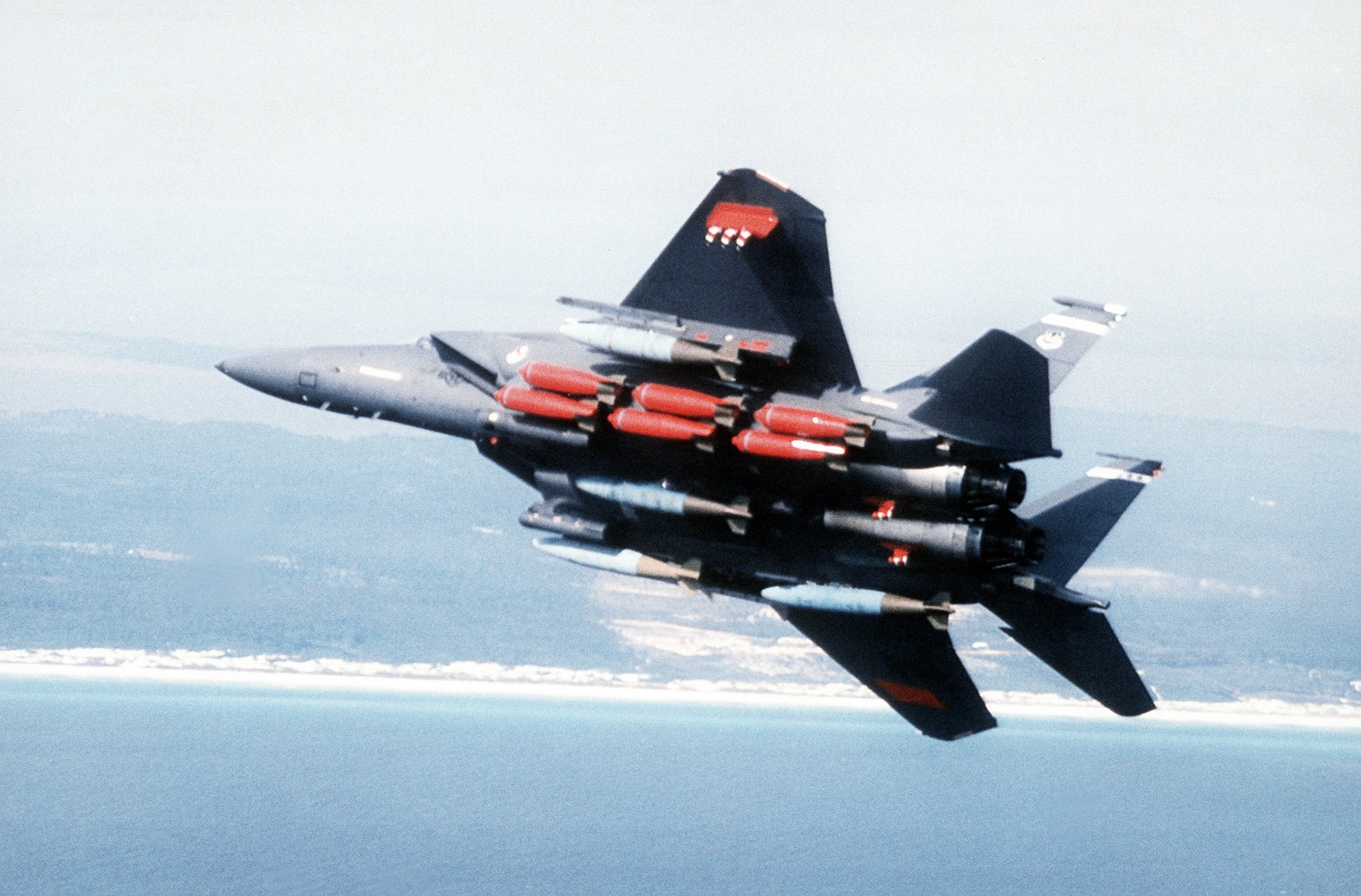
A two-seat TF-15A trainer, which had previously been used to test conformal fuel tanks (CFTs), was employed as a demonstrator in the early 1980s and took part in the Air Force’s Dual-Role Fighter (DRF) competition against the General Dynamics F-16XL, which was developed from the F-16 Fighting Falcon. In 1984, the Air Force announced that the F-15E had been chosen as the winner, due in part to its lower development costs and a belief that its twin engines gave it future growth potential. It also offered a greater range and could carry a larger payload.

By the time production began, the IAF carried out its Operation Wooden Leg, which likely convinced U.S. Air Force officials that they had made the right decision. The IAF would further adopt the F-15E Strike Eagle as the F-15I Ra’am.
Second Generation of the F-15
Even as the F-15 had been upgraded with the introduction of the F-15C/D models in the late 1970s, the F-15E has been seen as the beginning of the “second generation” for the aircraft.
“It has the capability to fight its way to a target over long ranges, destroy enemy ground positions and fight its way out,” the United States Air Force explains on its official F-15E website.

The F-15E Strike Eagle was equipped with new avionics and multi-role capabilities. Its front cockpit saw redesigned controls that included a wide-field-of-view heads-up display and three CRT displays, which provided the pilot with navigation, weapons delivery, and systems operations data. The rear seat was occupied by the Weapons System Officer (WSO), who would oversee four multi-purpose terminals for radar, weapons selection, and the monitoring of enemy tracking systems.
The Strike Eagle utilized a navigation system that combined a laser gyro and a Global Positioning System (GPS) to continuously monitor the aircraft’s position. Data was provided to a central computer and other systems, and displayed on a digital moving map in both cockpits. Displays could be moved from one screen to another.
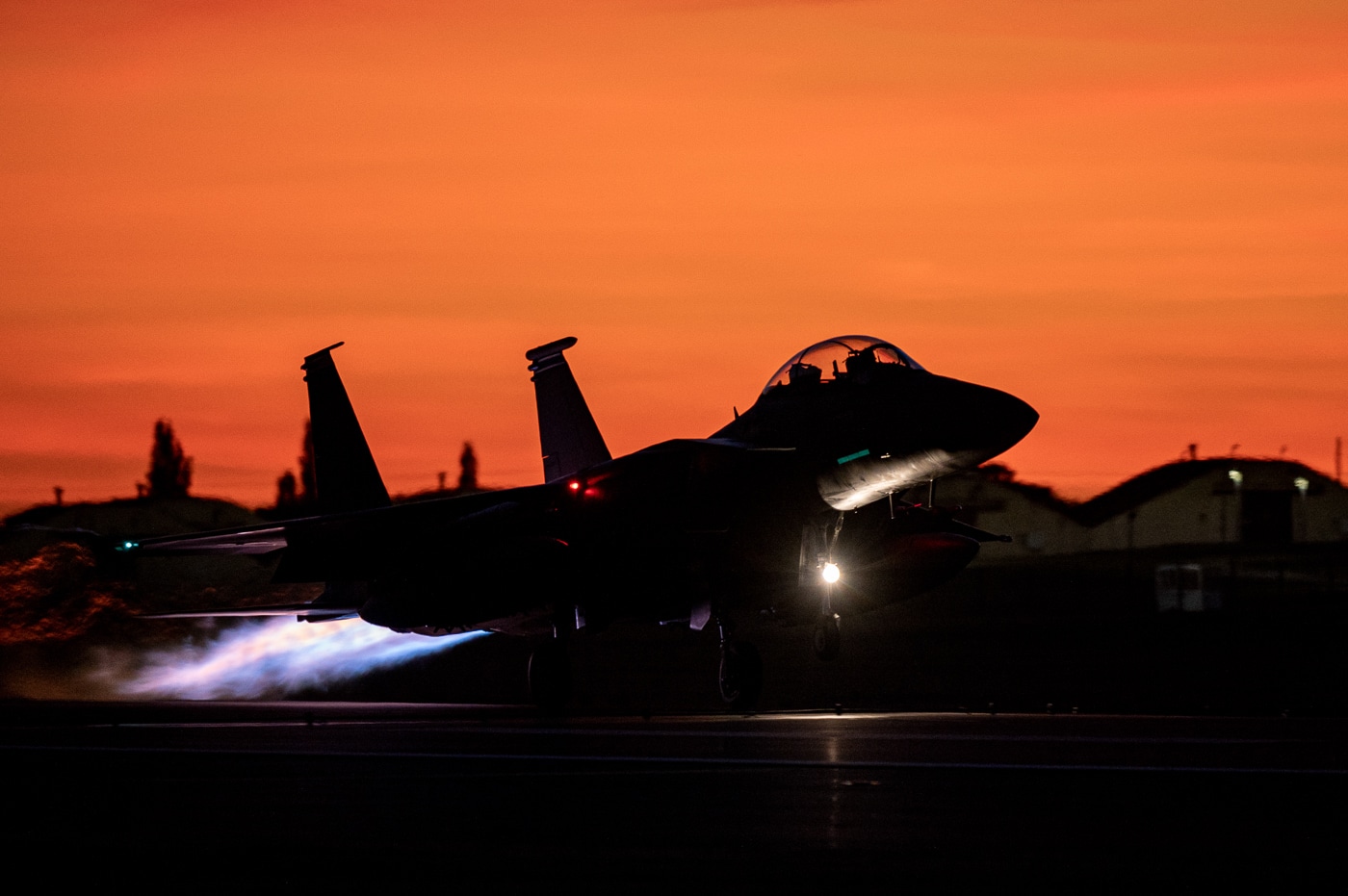
Primary sensors included an AN/APG-70 radar and the LANTIRN (Low-Altitude Navigation and Targeting Infrared for Night) navigation and attack system, the latter comprising two separate pods with terrain-following radar that was also linked to the flight control system. It provided targeting capability for the delivery of laser-guided weapons.
Upgraded Strike Eagles have received the AN/APG-82(V)1 active electronically scanned array (AESA). The radar enabled aircrews to detect ground targets from long ranges. According to the U.S. Air Force, “After a sweep of a target area, the crew freezes the air-to-ground map, then goes back into air-to-air mode to clear for air threats.”
For air-to-surface ground attacks (or as the Air Force referred to it, “weapon delivery”), the pilot could detect, target, and engage air-to-ground targets, with the WSO designating ground targets. LANTIRN, which consisted of two pods attached to the exterior of the Strike Eagle, further enabled the aircraft to fly at low altitudes at night and in any weapon conditions.
The aircraft wings were based around a robust torque box made of light alloy and titanium, while the attached wingtip sections, flaps, and ailerons are made of an aluminum honeycomb.
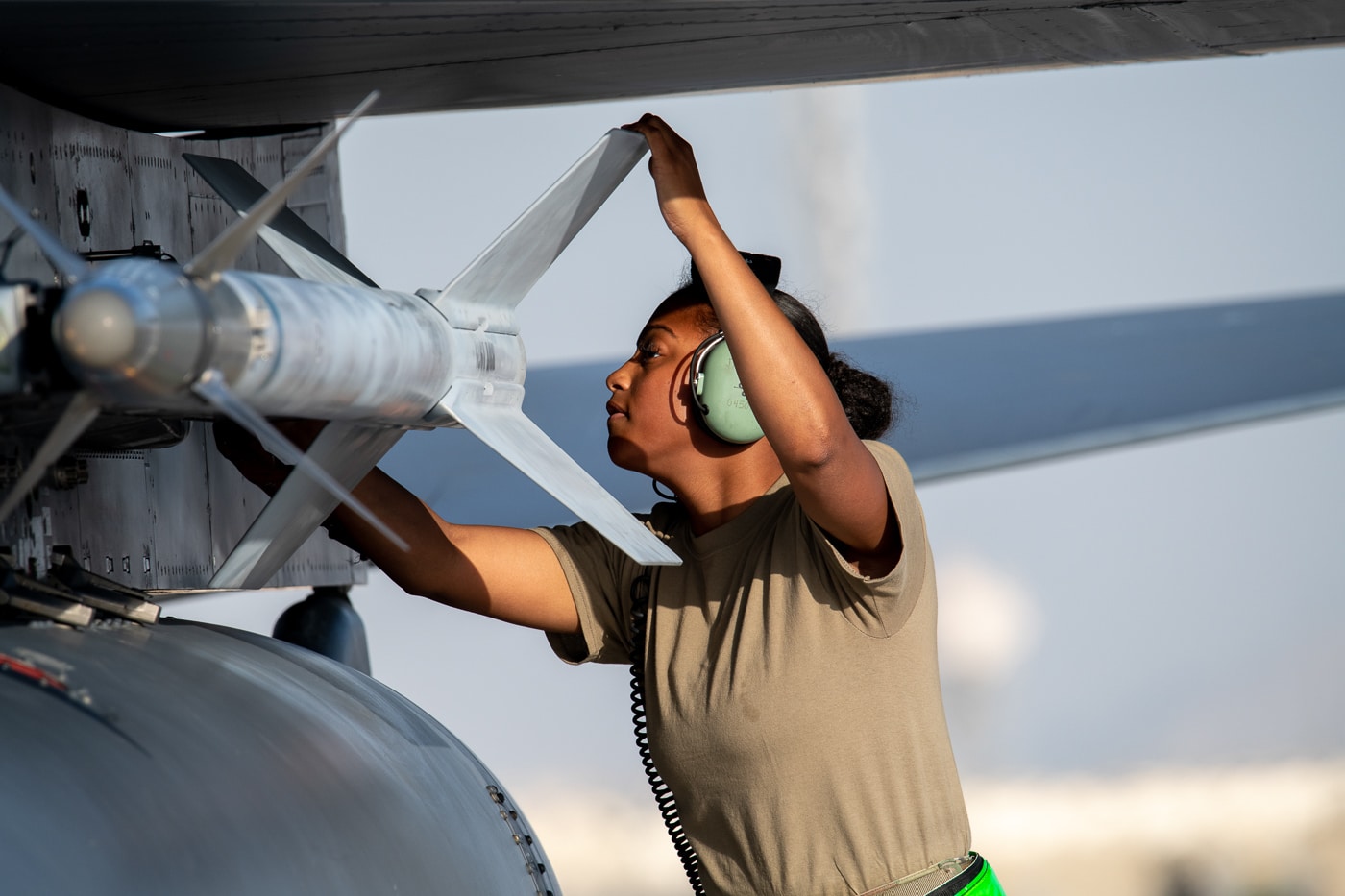
The F-15E was initially outfitted with twin Pratt & Whitney F100-PW-220 turbofan engines, equipped with a digital electronic engine control system. The aircraft was subsequently upgraded with the more powerful F-100-PW 229s beginning in 1991. Many older F-15E Strike Eagles were updated and retrofitted with the latter engine.
The F-15E Strikes!
The Strike Eagle first entered service with the 40th Tactical Training Wing at Luke AFB in 1988, and initial operational deliveries followed the 4th Tactical Fighter Wing at Seymour Johnson AFB, North Carolina.

The F-15E also made its combat debut in Operation Desert Storm in 1991, where its primary mission was to destroy Iraqi “Scud” mobile ballistic missile launchers. Since then, the F-15E Strike Eagle has been at the forefront of every major U.S. military air campaign, having seen action in Operation Enduring Freedom and Operation Iraqi Freedom during the Global War on Terror (GWOT), as well as in recent combat missions in Syria and Libya.
In those combat operations, the F-15E was noted to carry a mix of 227kg (500-pound) GBU-12 laser-guided bombs and 907kg (2,000-pound) GBU-31 GPS-guided bombs, as well as up to 500 rounds of ammunition for its M61A1 20mm (0.79 inch) cannon. For surveillance and targeting, the F-15E was fitted with the Lockheed Martin Sniper XR targeting pod.
F-15E Continues to be Upgraded
As of last fall, the United States Air Force had 218 F-15E Strike Eagles in its total inventory, but current plans have called for the fleet to be gradually reduced to just 99 upgraded aircraft. The service has sought to divest the rest of the fleet to modernize the most capable models, while the remaining F-15Es would be moved to the Davis–Monthan AFB’s famed “Boneyard,” which is maintained by the Air Force Materiel Command’s 309th Aerospace Maintenance and Regeneration Group (309 AMARG).
The plans had called for the F-15E Strike Eagle to be upgraded with new electronic warfare systems, the Eagle Passive/Active Warning and Survivability System (EPAWSS), which the Air Force described as “substantially improves pilot situational awareness with the capability to autonomously detect, identify, and locate threat systems, and then deny, degrade, and disrupt those same threats.”
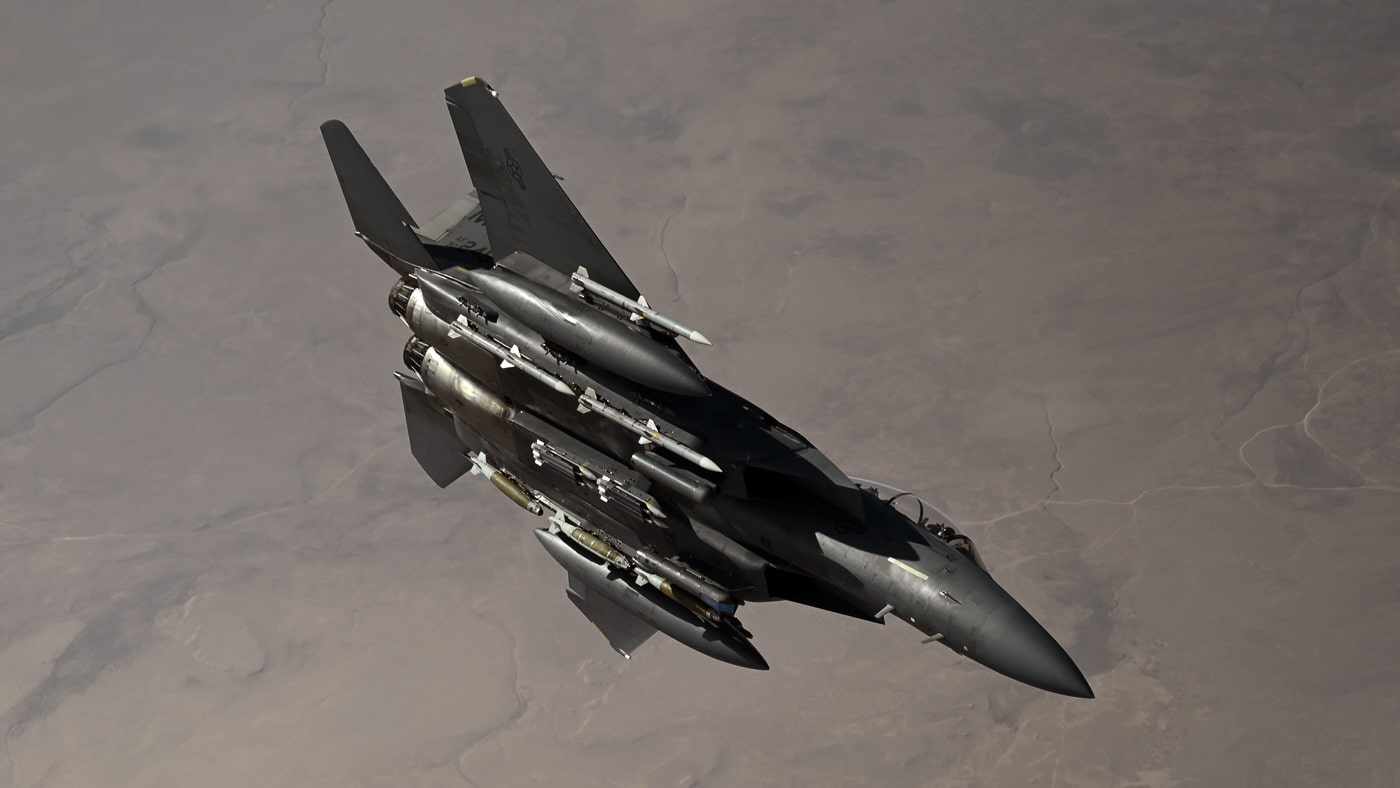
The Air Force announced in January 2025 that the F-15E EPAWASS program achieved a significant milestone with the first Strike Eagle delivered with the EW suite to active duty, operating out of Royal Air Force (RAF) Lakenheath, England.
The Air Force has also begun to test the air-to-air laser-guided 70mm Advanced Precision Kill Weapons System II (APKWS II) rocket from the F-15E. The weapon had previously been deployed on the F-16 Fighting Falcon and used against missiles fired by the Iranian-backed Houthi militants in Yemen in 2024.
Foreign Variants of the F-15 Strike Eagle
Multiple allied and partner nations have adopted the F-15E. The first export customer of the Strike Eagle was Saudi Arabia, which initially purchased 72 F-15S models in 1995. Having previously operated the F-15C/D models since the early 1980s as part of the “Peace Sun” program to enhance its air defense, the Royal Saudi Air Force (RSAF) acquired and updated its fleet with the strike-optimized version.
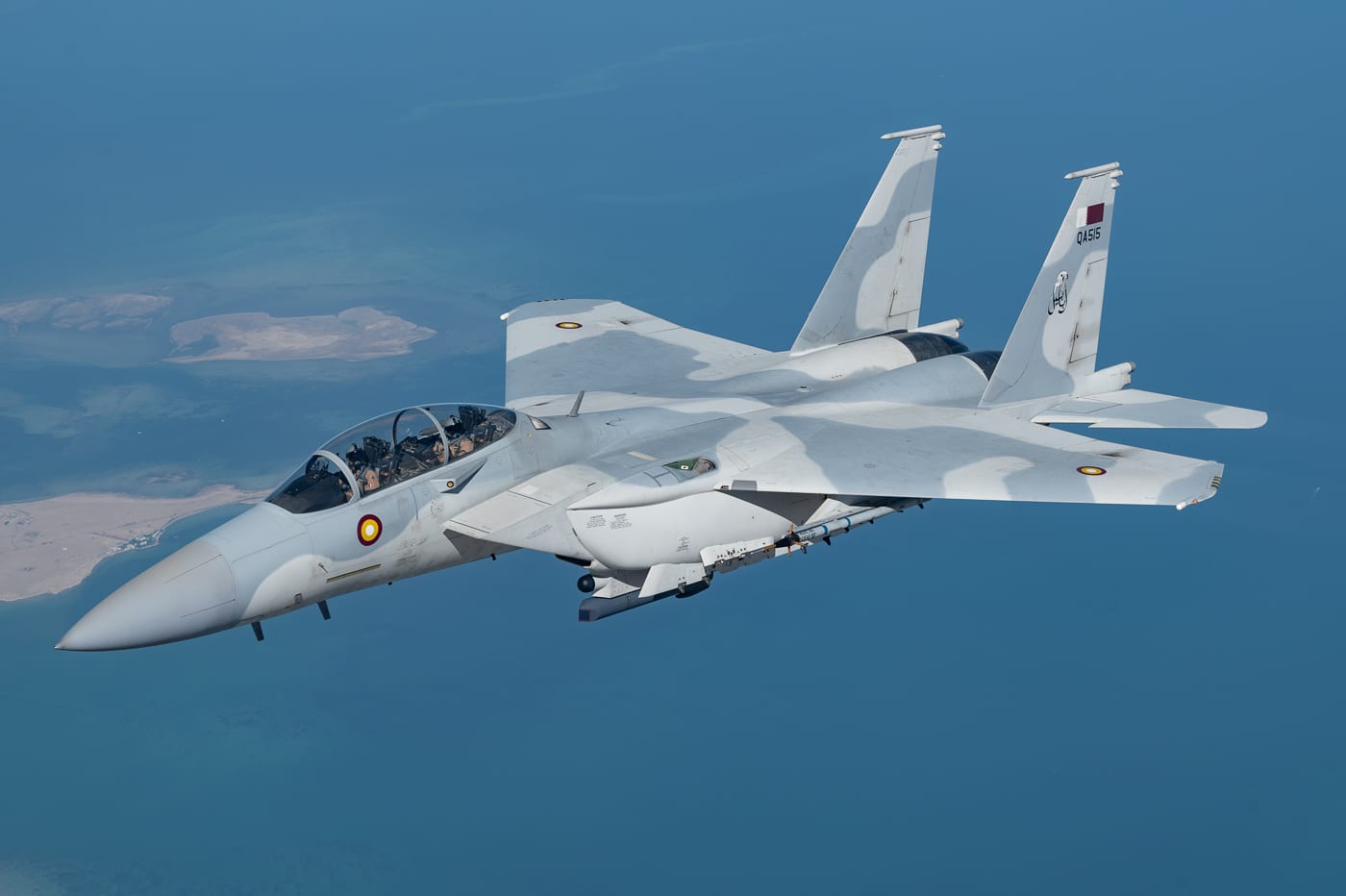
The F-15S retained the F-15E airframe but lacked the conformal fuel tanks, while some equipment was downgraded in accordance with the U.S. State Department’s Foreign Military Sales (FMS) terms. The Kingdom’s F-15S fleet was later upgraded to the F-15SA (Saudi Advanced), which added the Active Electronically Scanned Array (AESA) radar, a more advanced cockpit display than the original F-15S version, and an Infrared Search and Track (IRST) system. It was also equipped with a Joint Helmet-Mounted Cueing System, BAE Systems’ defensive suite, and new fly-by-wire controls. Much like the U.S. Air Force’s F-15E, the F-15SA has served as a multirole fighter capable of carrying out both air-to-air and air-to-surface operations. Riyadh has acquired 84 new F-15SAs while upgrading 70 of its F-15S to the new standard.
On the other side of Asia, the F-15K Slam Eagle has been operated by the Republic of Korea Air Force (ROKAF). It was so named for its capability to carry and launch the SLAM-ER cruise missile, and was chosen following a 2002 competition to become South Korea’s key aircraft for both air-to-air and air-to-ground missions. Developed to meet the requirements, the F-15K was outfitted with the General Electric F-110-GE-129A engines, AN/APG-63(V)1 ASEA radar, Joint Helmet-Mounted Cueing System (JHMCS), an updated cockpit with seven multi-function displays, and the Lockheed Martin Tiger Eyes sensor suite with infrared search and track (IRST) system.
Singapore also acquired around two dozen F-15SG variants, which are broadly similar to the F-15K with a few unique features, notably equipped with the APG-63(V)3 radar system.
Israeli F-15I Ha’am
One of the most notable variants of the F-15E Strike Eagle is the IAF’s F-15I Ra’am (Hebrew for “Thunder”), a customized version that first entered service in January 1998. It was developed to incorporate many of the features of the F-15E, but was also adapted to utilize an Elbit display and sight helmet (DASH) system. The Ra’am has been regarded as being among the most advanced F-15 models, with the possible exception of the F-15EX Eagle II, which is now entering service.
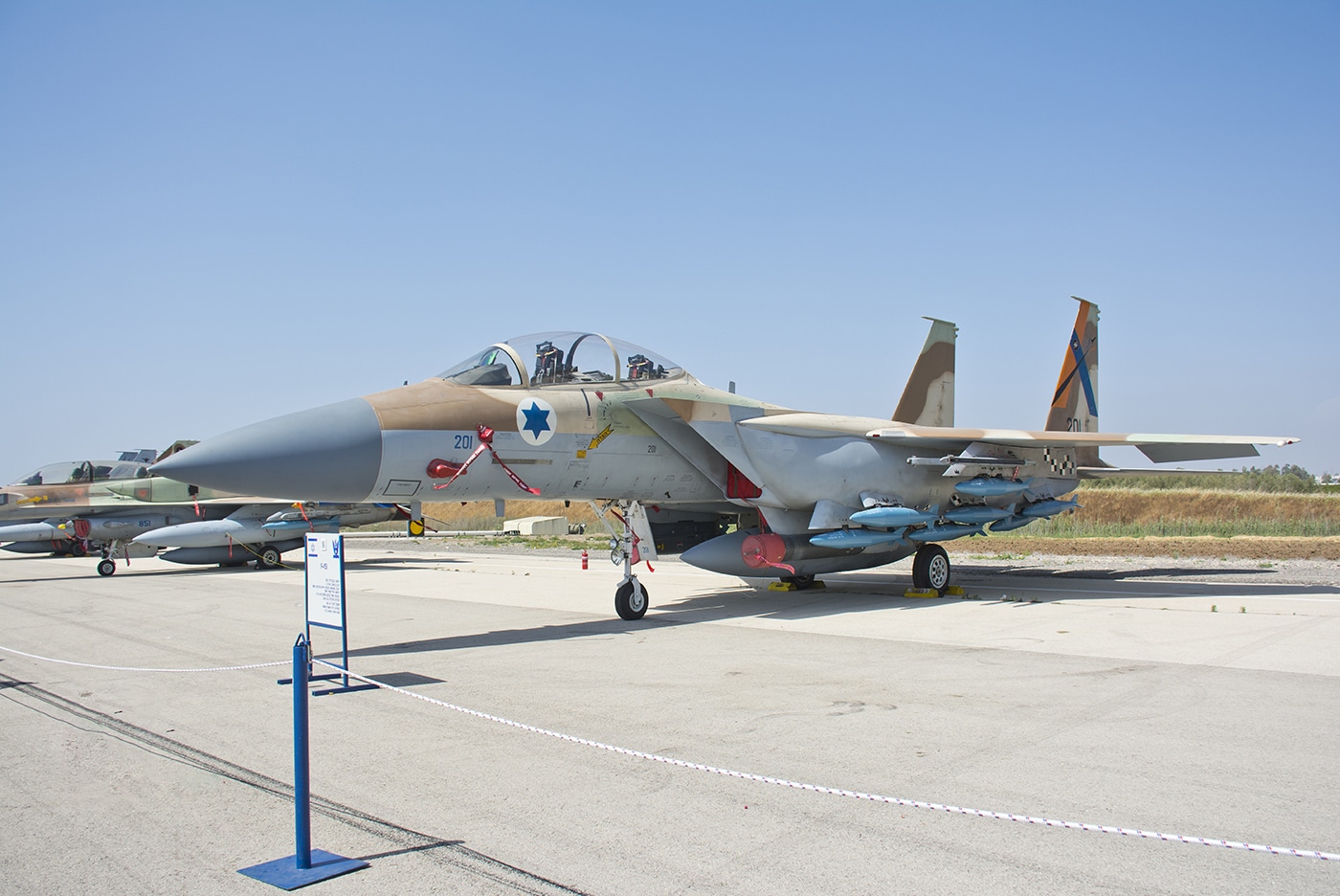
In addition to being equipped with the LANTRIN system, FLIR night vision sensor, and terrain-following radar, the Ra’am is outfitted with an EW suite designed and built by Elisra specifically for the F-15I.
The IAF has employed its F-15I fleet in combat operations in Lebanon and Syria, where it has been used to strike enemy command centers, weapons depots, and other high-value military targets. The Ha’am has been deployed in the ongoing military operations in Gaza, and in June 2025, served alongside the fifth-generation Lockheed Martin F-35I Adir (Hebrew for “Mighty One”), the IAF’s variant of the U.S. Air Force’s F-35A Lightning II, to strike Iran’s nuclear and military facilities.

Just as the F-15 Eagle saw success in hitting the PLO in Tunis in 1985, 40 years later, the IAF’s variant of the F-15E Strike Eagle proved it has remained the right aircraft to get such jobs done!
Legacy of the F-15E
A total of 435 F-15E Strike Eagles and variants, including the F-15I, F-15K, F-15S, and F-15SG, were built between 1985 and 2017 when production ended. Boeing, which acquired McDonnell Douglas in the 1990s, is now focused development of the F-15EX Eagle II, a further variant of the venerable F-15 Eagle.

For aviation buffs, the Strike Eagle has remained an elusive warbird to see, at least in person. As of summer 2025, there were no F-15Es on public display. Yet, it may become easier in the years to come to see the F-15E up close as the U.S. Air Force begins to retire the oldest models, which are likely to head to museums.
In 2012, Boeing donated a large model with a six-foot wingspan of the Strike Eagle to the Museum of Aviation at Robins AFB, Georgia, where it is now mounted outside the main entrance of its Eagle Building.
Editor’s Note: Be sure to check out The Armory Life Forum, where you can comment about our daily articles, as well as just talk guns and gear. Click the “Go To Forum Thread” link below to jump in!
Read the full article here

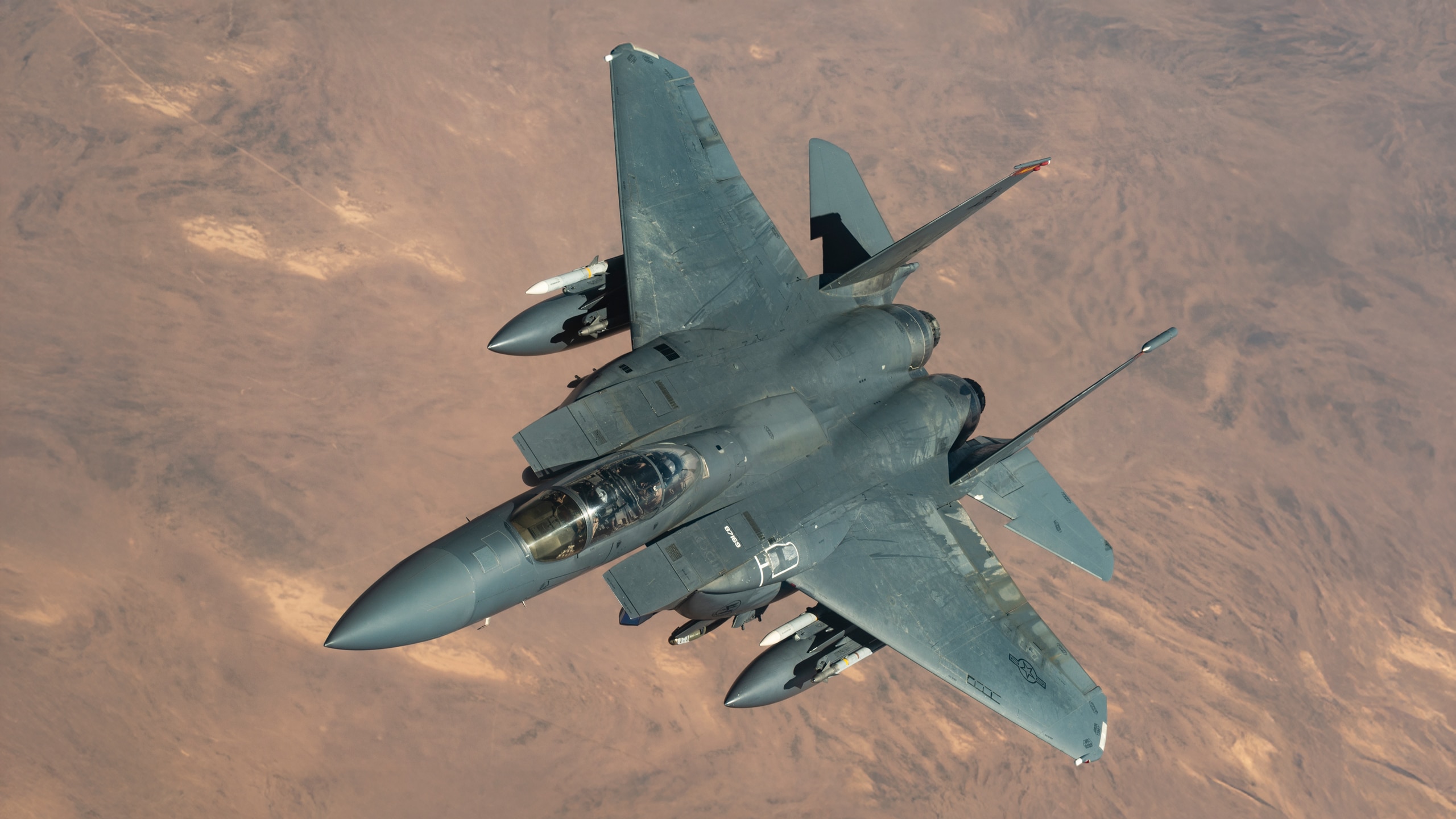






Leave a Reply